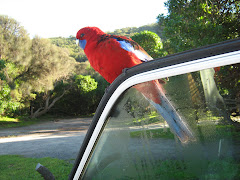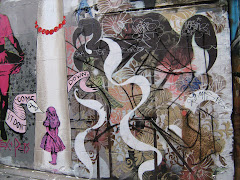
We are not alone in this world. Moreover, we cannot exist without intersubjectively communicating with other human beings (cf. “Images: Reflecting the Other” posted August 29, 2009). What can it mean to be free if we are never actually free of other human beings? I do not think that we should actually wish to be free of others. Without communicative cultural reality all that we call humanity or humaneness would not be possible. We might biologically exist without others, yet, our language, our modes of thought, our ethics, even our emotions would not be the same. Our whole perception and understanding of the world depends on our culturally learned appreciation of them (cf. e.g. Greiner, 2005; Wallner, 2002).
Freedom must then be limited with regard to romantic (or natural scientific) illusions we have. Yet, even using the term limitation can only make sense when these illusions are held upright to some extent. Let us dismiss them completely. We should accordingly no longer talk about a limitation but about a new conception. Freedom within an intersubjective framework can only be defined when the nature of intersubjective existence is clarified. I suppose that we exist in narrational contexts. Our relation to other human beings consists of telling stories to an audience and thus designing images in which we live – necessarily together with them.
Are we free to tell our personal story as we like it? Of course not. We are influenced by the narrative strategies we have been taught and the images that already exist interwoven with the space of existence that we claim at a certain moment of time in a certain culture. Additionally, the application of an egotistic narrational style would mean that we limited the narrative space of others, thereby foreclosing cross-fertilizing our own imagery. Moreover, the immoral impediment of others would in the end redound upon ourselves, as we can only prosper in truly inter-communicative environments.
Besides the intersubjective and sociohistoric setting framing our possibilities of story-telling we are influenced by the way others include us in their stories and by the motifs they develop. Yet, we can add our own perspective to the overall picture and hence have our personalities included in and dynamically enhanced by others’ stories and images. The more dynamically and openly we enter into the inter-communicative reality the greater our possibilities of advancement will become. A positive side-effect is that the larger the amount of stories we are involved in, the firmer our personality can be. It might be necessary to find the right balance between enough narrative involvement to be firmly backed up and too much narrative involvement in too many different kinds of stories – so that our personality’s outlines are blurred. Still, a personality is too intersubjective to be developed and sustained alone. Freedom thus means to be dynamically involved in inter-communicative reality.
Sources
Greiner, Kurt. Therapie der Wissenschaft – Eine Einführung in die Methodik des Konstruktiven Realismus. Culture an Knowledge 2. Frankfurt a.M.: Peter Lang, 2005.
Wallner, Fritz. Die Verwandlung der Wissenschaft – Vorlesungen zur Jahrtausendwende. Ed. Martin Jandl. Constructiviana – Interdisziplinäre und interkulturelle Wissenschaftstheorie 1. Hamburg: Dr. Kovac, 2002.






Keine Kommentare:
Kommentar veröffentlichen